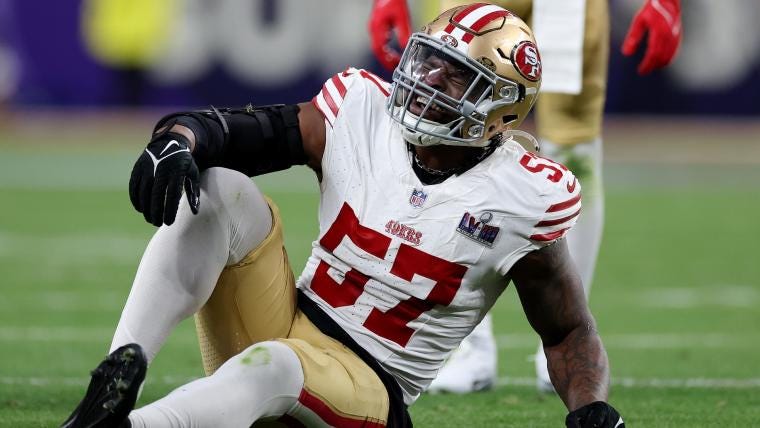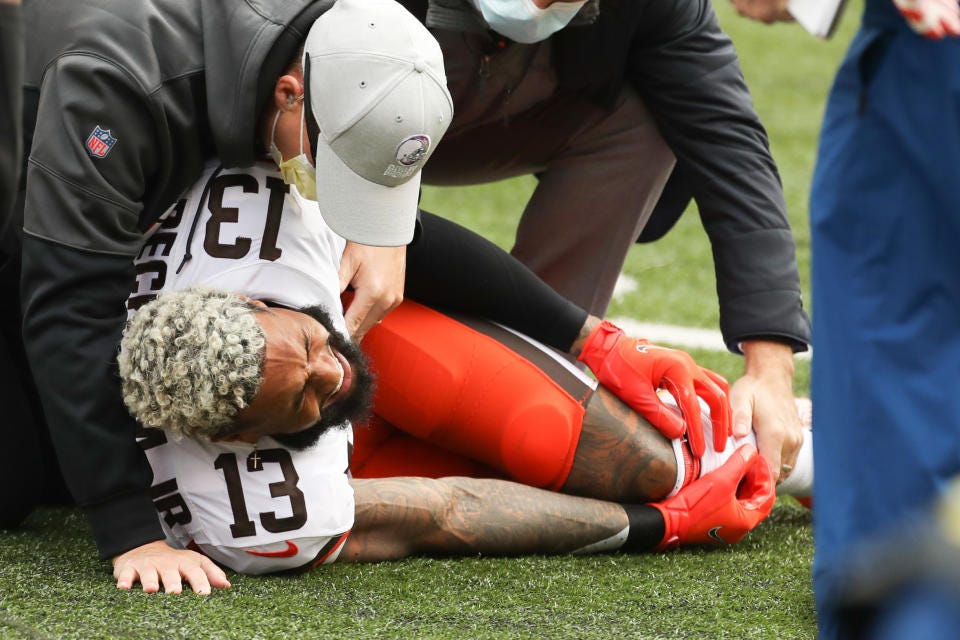The NFL's Reactive Strength Problem Showcased in Super Bowl 58
49ers Linebacker Dre Greenlaw Achilles rupture in the Super Bowl showcases the NFL's reactive strength problem.
Different Day, Same Injury.

The NFL season kicked off with a notable injury at the start of training camp involving Joe Burrow, the league’s highest-paid player, who injured himself on a noncontact injury relative strength play. The injury resulted from transmitting normal force output generated by his central nervous system (CNS) into abnormal connective tissue architecture. We at Absolute utilized this real-life example to highlight the blind spot in effectively training reactive strength - a fundamental capacity of Point B. To spotlight this ineffective treatment and training of reactive strength in the NFL and their struggles, we used the recurring Cooper Kupp "hamstrings" situation.

This theme we have been discussing all NFL season of players falling short of being at Point B in regards to reactive strength (see visual below) was highlighted during Super Bowl 58 on Sunday when 49ers LB Dre Greenlaw suffered a ruptured Achilles tendon (see video above). His injury, similar to Burrow's, occurred when exerting normal force into abnormal connective tissue, this time while running onto the field from the sideline during a change of possession.
The lack of reactive strength of the Achilles tendon in NFL players leading to ruptures continues to increase. These injuries spotlight the challenge the NFL is having in getting their athletes to Point B reactive strength. The issue was so bad this season for the NFL that we can easily state that ruptured Achilles tendons from Aaron Rodgers to Kirk Cousins to Dre Greenlaw emerged as a significant limitation constraint for the league, signaling a pressing issue that needs addressing - one that we called for last offseason:
The Ongoing Debate: Natural Grass vs. Artificial Surfaces in the NFL + Training Template to Improve Player Safety
Natural Grass vs. Artificial Surfaces There is an interesting ongoing debate between the NFL Players Association (NFLPA), the union representing NFL players, and the NFL regarding playing surfaces and player safety. The debate is: what type of playing surface is safer for the players - natural grass or artificial surfaces?
Connective Tissue Architecture - A Trainable Biological Element?
Evidence from the NFL’s investigation into hamstring injuries indicates that players are being returned to the level of competition without addressing the normalization of connective tissue architecture - let alone connective tissue behavior. MRI images spotlight this massive blind spot, as connective tissue architecture is not even viewed as a trainable tissue by the researchers - of course, after all, they are researchers, not strength practitioners.
Hamstring Injuries: Understanding the Internal Ecology of Injury
Throughout time, injuries to the hamstring have perplexed those in sport performance and sports medicine. From the understanding of injury mechanisms, proper rehabilitation, and training for return to sport have constantly provided a challenge for those in the field of athlete management. We at Absolute accept that challenge and would like to prov…
Now that the facts of reality are out there from a strength practitioner’s point of view, it is not a good look for the NFL. From our perspective to state once again, the only way out of this is to install and execute connective tissue-specific training that effectively stimulates the top-down and bottom-up components of our definition of reactive strength. Furthermore, reactive strength must be understood as an emergent behavior of the athlete, and the elements of it must be optimally stimulated and developed. The NFL’s reactive strength problem is a perfect example of a complex problem that has a simple solution - adherence to training the elements of reactive strength utilizing conjugate periodization.
Let us know your feedback!
Leave your comments and let us know your thoughts on the NFL’s reactive strength problem. Subscribers - yes or no, do you think this issue will be addressed, or do you think that next year we still be discussing the same problems?






I thought to myself during the game... I bet Absolute is going to break this occurrence down and dissect out what went on with those injuries. And here it is! Thanks fellas!
I think we will be discussing the same problems as for it to be addressed it would require a large amount of individuals on multiple levels to be open to realizing they need to change their training methods as well as medical staff implementing other strategies in which they bring these players back from injury. Also take into account contract parameters in the NFL that often times force players to get back onto the field as soon as possible with the fear that someone will come in and take their spot or be cut. As of right now with a majority of the focus being on external variables like playing surface as opposed to internal variables that they control like training and preparation, I don't think the change will come as soon as next year. I do feel though with continued platforms like this and people being open to learning , discussing, and working together for a common goal that the future has promise in this category.